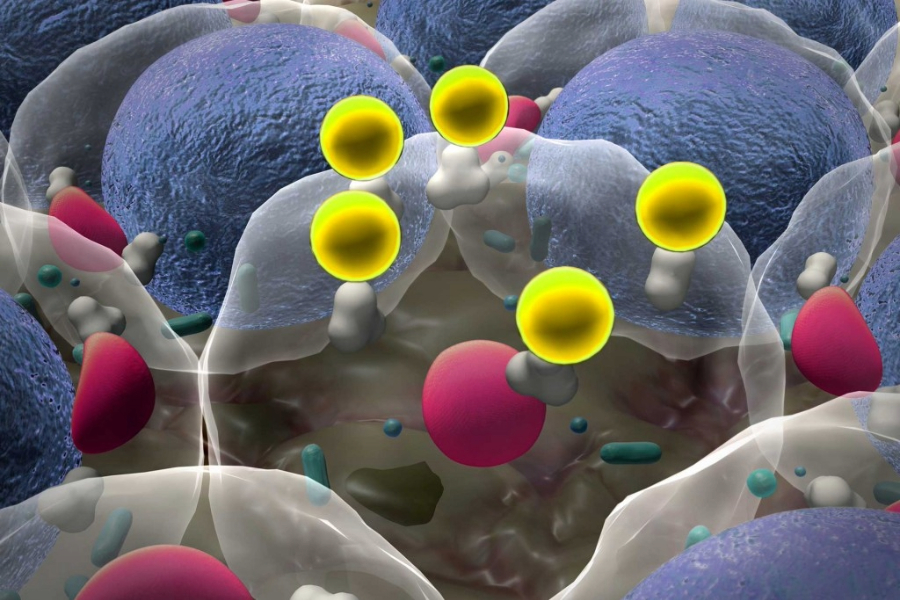Therapeutic Strategies of Nanoparticles in Skin Cancer Treatment
Nanotechnology-based treatments for skin cancer encompass a range of innovative approaches aimed at improving therapeutic outcomes, minimizing side effects, and enhancing targeted delivery of drugs Nanoparticles have shown promising potential in the field of skin cancer treatment. These tiny particles, typically ranging in size from 1 to 100 nanometers, offer unique advantages for drug delivery and imaging in cancer therapy. Some of the notable strategies being utilized in skin cancer treatment are discussed below:
Drug Delivery
Targeted Therapy: Nanoparticles can be engineered to target specific cells or tissues, such as cancer cells. This targeted delivery minimizes damage to healthy cells and enhances the effectiveness of the treatment.
Enhanced Permeability and Retention (EPR) Effect: Nanoparticles can exploit the abnormal blood vessel structure found in tumours, allowing them to accumulate selectively in cancerous tissues and improve drug delivery efficiency.
Liposomes and Micelles: Liposomes and micelles are lipid-based nanoparticles that can encapsulate drugs. They improve the solubility of poorly soluble drugs, enhance drug stability, and enable targeted delivery to cancer cells.
Polymeric Nanoparticles: These nanoparticles, made from biocompatible polymers, can be engineered to release drugs in a controlled manner. They offer a versatile platform for delivering a variety of therapeutic agents.
Abraxane: This is an albumin-bound nanoparticle formulation of paclitaxel, approved for treating breast cancer, pancreatic cancer, and non-small cell lung cancer.
Photothermal Therapy
Gold Nanoparticles: Gold nanoparticles can absorb light and convert it into heat, leading to localized hyperthermia that can destroy cancer cells. This approach is particularly useful for treating skin cancers like melanoma. Gold nanoparticles have unique optical properties that allow them to absorb light and convert it into heat. In photothermal therapy, these nanoparticles can be targeted to cancer cells and then heated with laser light, leading to localized cell destruction.
Diagnostic Imaging
Contrast Agents: Nanoparticles can serve as contrast agents in imaging techniques like magnetic resonance imaging (MRI), computed tomography (CT), and photoacoustic imaging. This helps in accurate diagnosis, monitoring treatment response, and detecting early-stage skin cancers.
Quantum Dots: Quantum dots are semiconductor nanoparticles with unique optical properties. They can serve as contrast agents for advanced imaging techniques, providing better resolution in diagnosing and monitoring skin cancer.
Photodynamic Therapy (PDT)
Nanoparticle-based Photosensitizers: Photosensitizing agents encapsulated within nanoparticles can be used in photodynamic therapy. Upon exposure to light, these agents generate reactive oxygen species, leading to the selective destruction of cancer cells.
Photosensitizer Nanoparticles: Nanoparticles can be loaded with photosensitizers, which, when activated by light, generate reactive oxygen species that selectively destroy cancer cells. PDT is a minimally invasive approach used for certain types of skin cancers.
Immunotherapy
Nanoparticle-based Vaccines: Nanoparticles can be designed to carry tumour antigens, adjuvants, or other immunomodulatory agents. This approach can stimulate the immune system to recognize and attack cancer cells. This approach holds promise for enhancing the body’s natural ability to fight skin cancer.
Biosensing and Monitoring
Nanoparticle Sensors: Nanoparticles can be employed as biosensors for detecting specific biomarkers associated with skin cancer. This aids in early detection and monitoring of the disease. Nanoparticles can be integrated into bio sensing platforms for the detection of specific biomarkers associated with skin cancer. These biosensors contribute to early diagnosis and monitoring of the disease.
RNA and Gene Delivery
Nanoparticles for Gene Therapy: Nanoparticles can be used to deliver therapeutic genes or small interfering RNA (siRNA) to target specific genes involved in skin cancer progression. This approach aims to modulate gene expression and inhibit tumour growth.
Sustained Release
Controlled Drug Release: Nanoparticles can provide a controlled release of therapeutic agents over an extended period, ensuring a sustained and effective treatment.
Nanostructured Drug Delivery Systems: Various nanostructured drug delivery systems, such as nanofibers and Nano gels, enable sustained release of therapeutic agents. This prolonged release can improve treatment efficacy and reduce side effects.
While these advancements are promising, it’s important to note that the field of nanoparticle-based therapies is still in the research and development stage. Challenges such as biocompatibility, toxicity, ensuring the safety and efficacy of these treatments, addressing potential toxicities, optimizing the delivery systems and scalability need to be addressed before widespread clinical use. Researchers are actively working on optimizing nanoparticle formulations and exploring their potential in personalized medicine for skin cancer treatment.
Source

